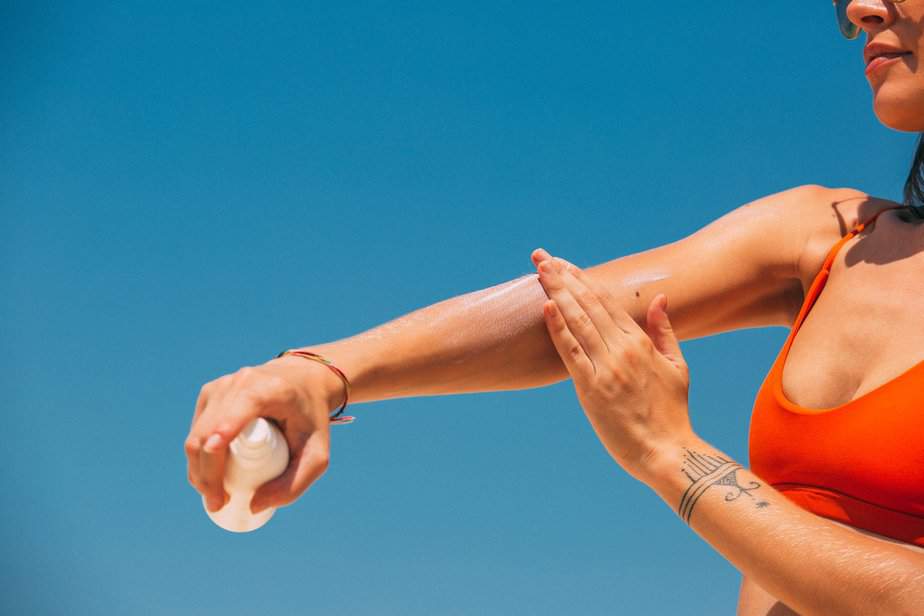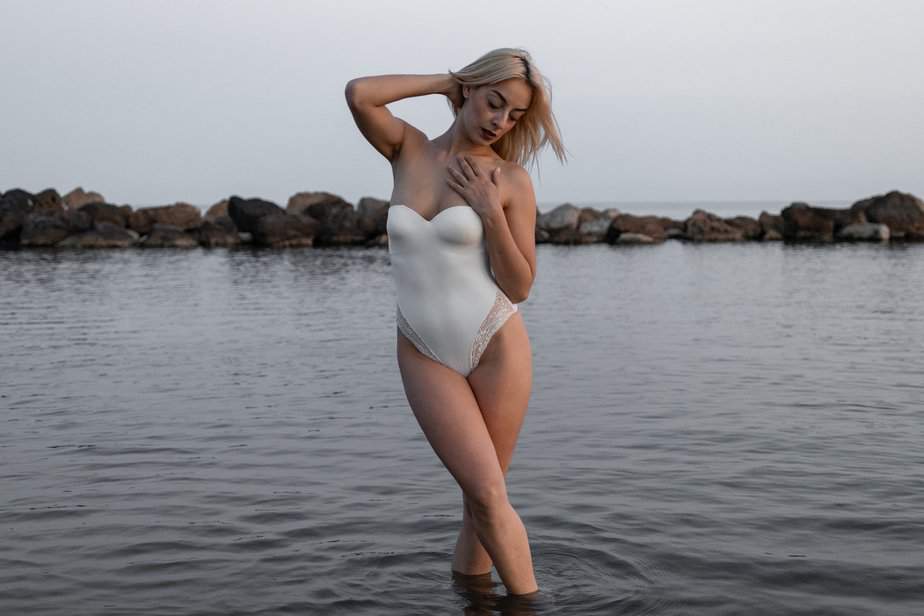There’s a reason why many experts advocate getting a darker swimsuit; they don’t stain as easily and they are less likely to become see-through when wet. However, it’s a bit lame if every swimsuit you own is black. Variety is the spice of life, and sometimes you want to wear brighter colors, or even pure white.
The issue with wearing lighter colors, especially white bathing suits, is that stains become much more visible on them, yellow stains being the worst culprit. It’s hard to look adorable in your colorful swimsuit if it’s got an unsightly yellow tinge to them, isn’t it? Yellow stained swimsuits also look older, so your relatively new swimsuit might look like it needs replacing already.
Why do swimsuits turn yellow? How can you prevent this from happening? The most common reasons are exposure to sun, pool chemicals like chlorine, oil, sweat, and sunscreen. To prevent your white bathing suits turning yellow, you must take great care to immediately and thoroughly wash your swimsuit post-swim.
In this article, we will shed more light on how your swimsuits can get stained yellow, as well as the steps you can take to not only wash off yellow stains, but prevent them from appearing in the first place.
What causes your bathing suit to turn yellow
The sun

Even though swimsuits have an ultraviolet protection factor (UPF), which is a rating of how many UV rays it blocks, that doesn’t mean it is completely immune to sun damage. That said, it is more UV resistant than clothing that does not have a UPF.
The issue, as we’ll find with the other causes, is prolonged exposure. If you are wearing your swimsuit in the sun for many hours a day throughout the summertime, and continue to do so for multiple summers, then your swimsuit colors will begin to fade, slowly replaced by a yellow color.
This problem is most commonly seen in white swimsuits and is an unavoidable part of owning a swimsuit. It can be seen in darker swimsuits with lighter colors in its design, such as polka dots; you’ll notice the white polka dots starting to become yellow dots instead.
Sweat and oils
That’s right, your own bodily secretions are one of the culprits of your swimsuit turning yellow. We are referring mostly to oil and sweat. Even when you’re underwater, you can sweat if you’re being physically active.
And even if you don’t sweat all that much, your body naturally produces oils to prevent your skin and hair from drying out. Since swimsuits are supposed to fit tight against your body, naturally the sweat and oils will get infused into the swimsuit over time.
That’s why the most common areas to see yellow stains on bathing suits are around the armpits, bikini straps, and cleavage, because there’s a good chance that is where you sweat the most.
Sunscreen

Unfortunately, the very thing we need to protect our skin from the sun’s rays can contribute to staining our swimsuits yellow. When we sweat or enter the water, some of the sunscreen will get washed off and it can ultimately end up on our swimsuit.
(As an aside, you should apply sunscreen 30 minutes before you head into the sun to give it time to enter your skin so that less of it will simply be washed off onto your swimsuit.)
Thankfully, if you’re quick enough, you can rinse the sunscreen off the swimsuit before it penetrates too deeply into the fabric. That said, given enough time, there can still be some discoloration of your bathing suit despite your best efforts. This may dismay you, but don’t think of it as wasted effort; you are prolonging your swimsuit’s lifespan by taking good care of it.
To further prolong your swimsuit’s lifespan, we recommend specifically using reef-safe sunscreen. So as not to harm the environment, reef-safe sunscreen is only made with natural ingredients and does not contain harmful chemicals that will not only harm the sea life, but your swimsuit fabric as well.
Pool chemicals

Water is a breeding ground for bacteria, so in order to keep you safe, many chemicals are added into the pool water to sanitize it by killing bacteria. The most prominent chemical is chlorine.
Chlorine is notorious for damaging hair and bathing suits if it is not washed off. It can even stain your teeth yellow. However, it is a necessary evil that won’t be going away anytime soon because it is so effective at killing bacteria.
Not only can chlorine cause the swimsuit fabric to deterioriate, but it also causes discoloration and fading, including staining it yellow. This is even more reason to rinse your swimsuit immediately after swimming so that you can wash off not only the sunscreen, sweat, and oil, but lingering chlorine as well.
How to prevent your swimsuit from getting stained yellow
Now that you know the main reasons why swimsuits can get stained yellow, the question now is how can we prevent that from happening? Thankfully, the answer is very simple: wash your swimsuit after getting out of the water. Specifically, here are the steps you should take:
- Rinse your swimsuit with fresh, cold water. As soon as you get out of the water, head straight to the shower and rinse yourself and your swimsuit. Really scrub yourself down to remove any chlorine or sunscreen off the swimsuit. You can also rinse it quickly in a bathroom sink if you don’t plan on showering just yet.
- Do a more thorough wash at home. It’s unlikely you did a thorough enough job rinsing your swimsuit at the pool. At home, you can use detergents to remove even more chemicals and oils. Specifically use detergents designed for washing swimsuits, because laundry detergents can further damage the swimsuit.
- Avoid using the washing machine. I recommend hand washing swimsuits. This is a point of contention for many because some people argue that using the cold wash setting and putting the swimsuit in a mesh bag will protect it from damage. It’s up to you, but I believe a washing machine will cause significant wear on swimsuits, reducing its lifespan drastically.
- Let it soak for tougher stains. If your swimsuits have already started yellowing, the same steps mentioned above should be performed from now on. Additionally, you can let your swimsuit soak in water mixed with the detergent to really let it penetrate into the fabric and get at the root of the problem.
If you are not a fan of your swimsuits turning yellow, then your only options are to thoroughly wash it to prevent stains or remove existing stains, or to simply wear a dark swimsuit so that any stains are not as apparent.
No swimsuit will last forever, but white bathing suits are the most likely to be discarded because of how quickly stains can be seen on them. Before you decide to buy a white swimsuit, be aware of the extra work you’ll need to do to keep them looking pristine.

